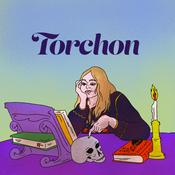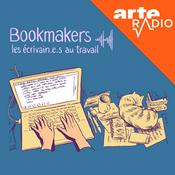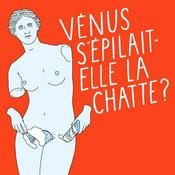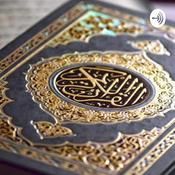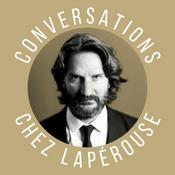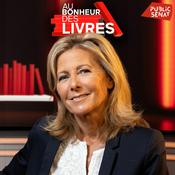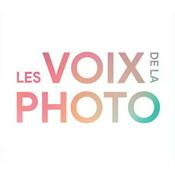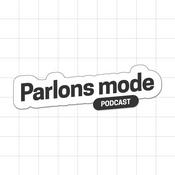342 épisodes

Re-Air: Why No One Trusts Art Prices Anymore
01/1/2026 | 38 min
As we close out another bumpy year in the art market, we are revisiting a recent episode that looks at one of the factors in play: the erosion of logic when it comes to the price of works of art. Our editor-in-chief was on the podcast sharing what she learned about how the rules of art pricing were made and broken—and what may come next. What’s a painting worth? For art world professionals, that question of price has never been easy—but lately, it’s gotten harder than ever. As we’ve discussed on this podcast before, the art market has cooled off. But this isn’t just a downturn—it’s a disruption. The system that once supported pricing logic is now in disarray, and dealers and advisors are feeling the strain. In a recent report for Artnet News Pro, our editor-in-chief Naomi Rea explored how the traditional rules of art pricing have stopped making sense. With confidence waning and speculation drying up, dealers are quietly recalibrating. What we’re seeing may be more than a correction—as Naomi reports, it could be the unraveling of an entire logic. Naomi joins senior editor Kate Brown to unpack what’s going on in the “danger zone” of the market and how different players—from mega-galleries, emerging dealers, to advisors and collectors—are adapting. They also discuss whether we might be heading toward a more sustainable and meaningful art market.

Re-Air: How Painters Today Are Reframing… the Frame
25/12/2025 | 31 min
We love to do deep dives into trends that we are noticing in painting and the trend of “Bordercore” was one of our best-loved from the year, so we decided to revisit it this holiday season. We take a look at the emergent trend in art which is wild and inventive takes on frames, suddenly front and center for many painters of the moment as a way to push new boundaries in painting. Almost by definition, the frame of a picture is something that you are not supposed to notice. But if you go to the art galleries to look at paintings now, you might get a very different sense of what a frame can or even should do. Weird and wild frames that very much draw attention to themselves seem to be having a moment. Recently, Artnet writer and editor Katie White penned a piece titled “Bordercore: Why Frames Became the New Frontier in Contemporary Art,” in it, she writes: A new wave of contemporary art is reconsidering the frame as a central character, one that is surreal, sculptural, and symbolic. Artists are using the border not just to contain, but to comment, disrupt, or extend the work beyond itself. This is driven by an embrace of more bespoke, historic artistic processes, but also, as a rebuttal to the superflat virtual age. More and more, paintings have been appearing at fairs and in exhibitions with statement frames, after a long era of often-frameless display. If for previous generations, the frame was a liability that could detract from the cerebral, intellectual, and aesthetic experience of the canvas, artists today are creating frames that attempt to pull us back into bodily reality, a haptic experience of art. In her essay, she looks both at the history of framing styles, and talks to a number of contemporary painters to figure out what is causing so many to treat something that was literally considered peripheral to what they do as very much part of the main attraction. This week she joins art critic Ben Davis on the podcast to discuss this new frontier in art.

Why This Famed Art Writer Turned to True Crime
18/12/2025 | 41 min
Chris Kraus is one of the most well-known contemporary art writers. She is also an important taste-maker, co-editor of independent publisher Semiotext(e), which played a key role in introducing French theory to U.S. audiences. But Kraus is probably best known today as a novelist. Her 1997 autobiographical novel I Love Dick became a buzzy literary reference in the 2010s, and a model for autofiction. It was even made into an Amazon show. This fall, Kraus put out a new novel, titled The Four Spent the Day Together. It has a cryptic three-part structure that I think I should set up. The first part focuses on a young woman named Catt Greene. Drawing heavily on Kraus’s own life, it describes a childhood growing up in Connecticut, being bullied, and dreaming of leaving the hardships of her depressing lower-class life behind through experiments with drugs and sex, activism and art. The second part focuses on Catt many decades later, now an art critic and novelist who has found unexpected success with a novel called I Love Dick, which is being made into an Amazon show. But it also focuses on the character of Paul, Catt’s husband, an addiction councilor who struggles with addiction himself, which slowly tears the two apart. Like the real-life Kraus, the character Catt Greene owns properties in Albuquerque, New Mexico, which she rents out. Like Kraus, Greene is attacked by online critics in the late 2010s for being a landlord. This leads to Part 3 of the book. Feeling demonized, and that her own life is running out of raw material to turn into literature, Catt Greene finds herself drawn to investigating a real-life murder in bleak rural Minnesota. The character of Catt Greene, and Kraus through her, attempt to reconstruct the grisly facts of the case, and try to make sense of it. That’s probably enough set-up. Chris Kraus joins national critic Ben Davis to talk about her writing, her life, and her new book.

The Round-Up: 2025’s Highs, Lows, and WTFs
11/12/2025 | 48 min
We are back this week with our monthly edition of the Art Angle Round-up, where co-hosts Kate Brown and Ben Davis are joined by a guest to parse some of the biggest headlines in the art world. As we close out a busy calendar year—and for the last roundup of the year—we are reviewing all of 2025 and the trends, themes, and stories that defined it with Andrew Russeth, Artnet Pro editor and art critic. It's been a whirlwind of a year. We take a look at the art market, where slumped sales, gallery closures, and existential dread dominated the business up until November, when New York’s fall auctions saw the narrative take a turn, something that seemed to sustain across the primary market at Art Basel Miami Beach. We discuss what this could mean for 2026. In the realm of politics, Trump 2.0 began, which ushered in a wave of policy shifts, cultural tensions, and uncertainty that reverberated across the art world, from federal arts funding to museum governance and international cultural exchange. We also ask whether the art world did finally go post-woke, a question Davis posed at the top of the year, the return of digital art, and the ongoing power of red chip art. And it was a year of profound transformation for institutions, which are facing a multi-front crisis due to the changing expectations from the public, exploding costs, and a shifting political landscape. And, of course, there are also some fun stories in the mix, because this is the art world, a place that is known to be rather unusual.

The Magic of 'The Artist's Way'
04/12/2025 | 29 min
Millions of people know The Artist's Way. First published in 1992, the book began as notes for a class that its author, Julia Cameron, taught on creative self-discovery or, as she sometimes prefers to call it, “creative recovery.” It found a huge audience, and today you can find Artist’s Way groups all over the world. Cameron’s original The Artist’s Way offered a 12-week path towards overcoming artistic blocks. The book was subtitled “A Spiritual Path to Higher Creativity,” and it spoke of plugging into a current of what she called “spiritual electricity.” But her techniques were practical and easy to grasp. Rituals from The Artist’s Way such as starting your day by writing out three pages of unedited text, known as "doing your Morning Pages," have become part of the creative process of many, many artists, musicians, and writers. More than three decades after its publication, The Artist’s Way continues to find new followers, and even got a new bump of popularity during the 2020s. And Julia Cameron herself has returned this year with The Daily Artist’s Way, offering a new way in for fans. Cameron agreed to speak to national critic Ben Davis to revisit the origins of her famous method and how she’s tweaking it now in this new book.
Plus de podcasts Arts
Podcasts tendance de Arts
À propos de The Art Angle
Écoutez The Art Angle, Torchon ou d'autres podcasts du monde entier - avec l'app de radio.fr

Obtenez l’app radio.fr gratuite
- Ajout de radios et podcasts en favoris
- Diffusion via Wi-Fi ou Bluetooth
- Carplay & Android Auto compatibles
- Et encore plus de fonctionnalités
Obtenez l’app radio.fr gratuite
- Ajout de radios et podcasts en favoris
- Diffusion via Wi-Fi ou Bluetooth
- Carplay & Android Auto compatibles
- Et encore plus de fonctionnalités


The Art Angle
Téléchargez l’app,
Écoutez.
